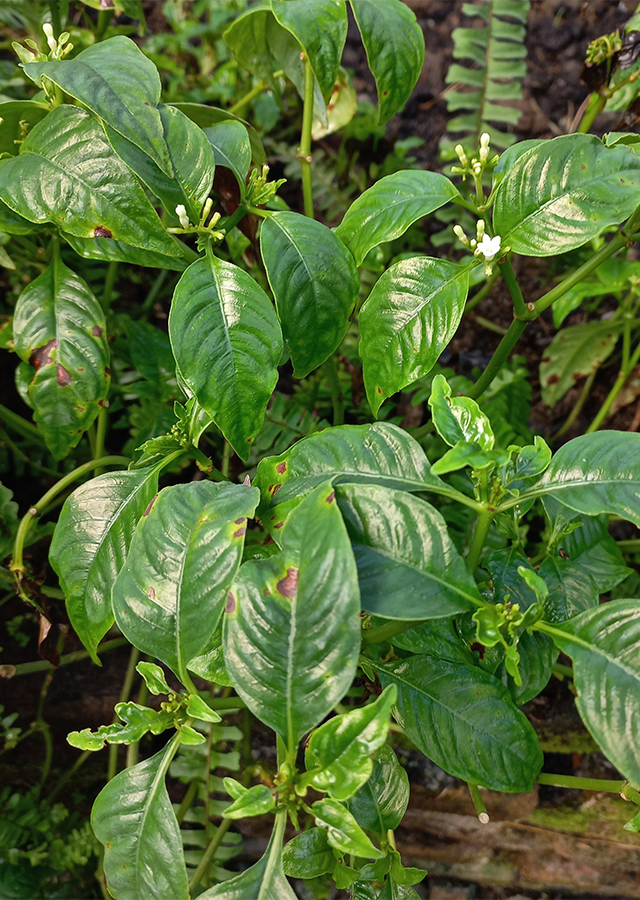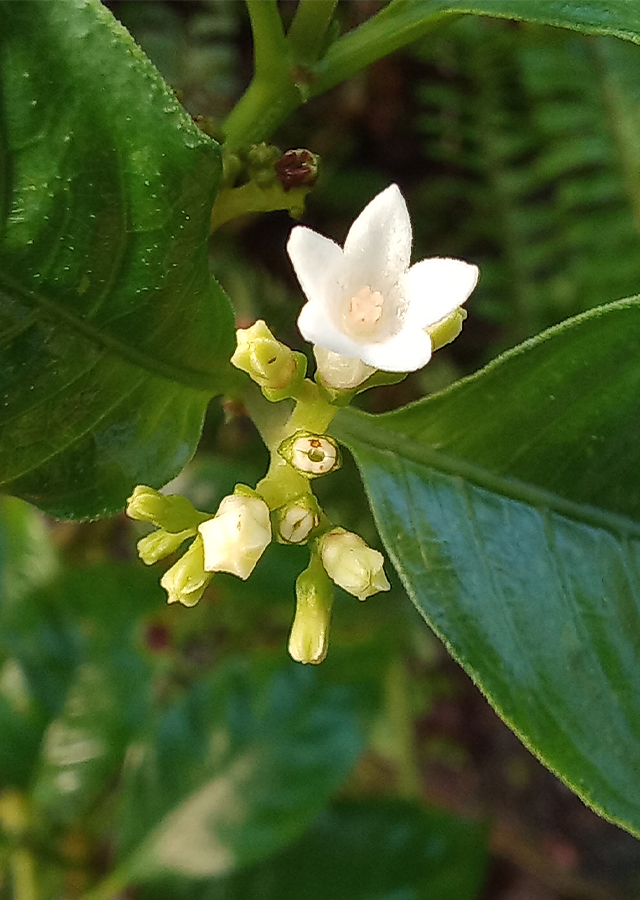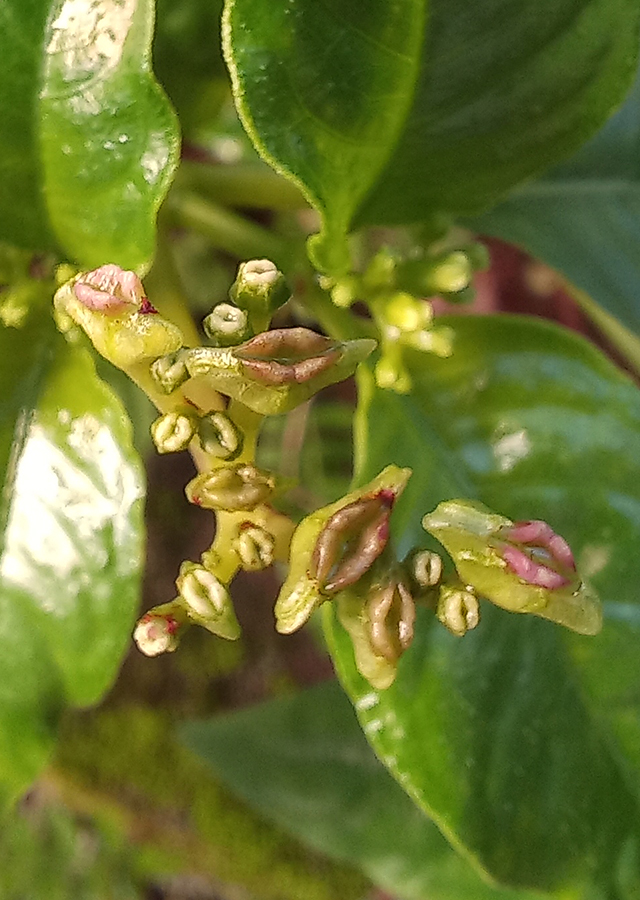Mongoose Plant
Ophiorrhiza mungos L.
Rubiaceae
Location in our garden
Green House



Synonym
Ophiorrhiza ostindica Christm.
Habitus
Herbaceous. An erect, herbaceous, evergreen perennial plant that can reach up to 1 m tall
Part Used
Leaves
Bark
Roots
Growing Requirements
Need Shade
Habitat
Forest
Overview
Ophiorrhiza mungos is native to India, Bangladesh, East Himalaya, Indonesia, Malaya, Myanmar, Nicobar Island, Sri Lanka, Thailand, and Vietnam. The plant is harvested from the wild for local use as a medicine. A paste made of the scrapings of the stem is used in the production of scabbards and guitars.
Vernacular Names
Sarpari (Assamese-India), She gen cao (Chinese).
Agroecology
Grows in primary and secondary forest, in moist localities; at elevations up to 400 metres.
Morphology
- Roots - rooting at lower nodes.
- Stems - glabrescent to puberulent.
- Leaves - 7-15 x 3-6 cm, elliptic or elliptic-lanceolate, base attenuate, apex acuminate, chartaceous, hirsute on veins below; petiole to 1.5 cm; stipules subulate, 3-5 mm long, 2-fid at tip.
- Flowers - flowers in terminal branched, scorpioid cymes, dense. Peduncle to 2.5 cm long, rusty pubescent. Calyx tube 1 mm long; lobes obscure. Corolla 0.8-1 cm long, white with pink shades on lobes.
- Fruit - capsule 2.5-3 long, 4-6 mm wide, obcordate, laterally compressed, glabrous, dehiscence loculicidal.
- Seeds - many, angular.
Cultivation
Generative propagation is by seed.
Chemical Constituents
Alkaloids (camptothecin, hydroxyl camptotheicin, 10-methoxy camptothecin), glycosides, phytosterols, phenolic compounds, tannins, hydrocyanic acid, and flavonoids.
Traditional Medicinal Uses
- The bark of the root is said to be laxative and sedative.
- A decoction of the leaves, roots and bark make an agreeable, bitter tonic and stomachic.
- The plant is used as a poultice for keeping the skin moist and soft.
- It has also been shown to have potentially useful activity against pathogenic protozoa such as Leishmania donovani and Trypanosoma brucei, which cause Leishmaniasis and sleeping sickness.
- It is used in China against cancers of the neck and head.
- It is also possess antivirus activity against Herpes simplex virus.
Part Used
Reference Sources
- E-Flora. (No date). Flora of China: Ophiorrhiza mungos. http://www.efloras.org/flora_page.aspx?flora_id=2. 16-12-2021.
- Fern, Ken. (2021). Useful Tropical Plants Database: Ophiorrhiza mungos L. http://tropical.theferns.info/viewtropical.php?id=Ophiorrhiza+mungos. 15-12-2021.
- India Biodiversity. (No date). India Biodiversity Portal: Ophiorrhiza mungos L. https://indiabiodiversity.org/species/show/263980#morphology. 15-12-2021.
- Kew Royal Botanic Gardens. (No date). Plants of the World Online:Ophiorrhiza mungos L. https://powo.science.kew.org/taxon/urn:lsid:ipni.org:names:758527-1. 15-12-2021.
- Madhavan, V., et al. (2013). Pharmacognostical studies on the leaves of Ophiorrhiza mungos Linn. (Rubiaceae). https://www.researchgate.net/publication/273977641_Pharmacognostical_studies_on_the_leaves_of_Ophiorrhiza_mungos_Linn_Rubiaceae. 16-12-2021.


